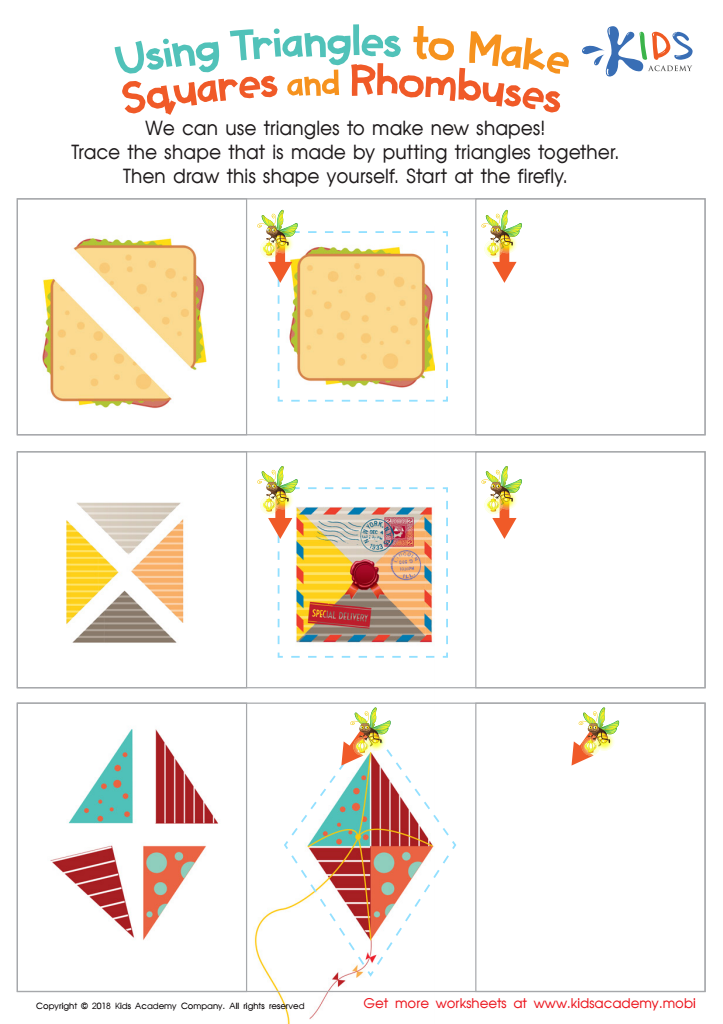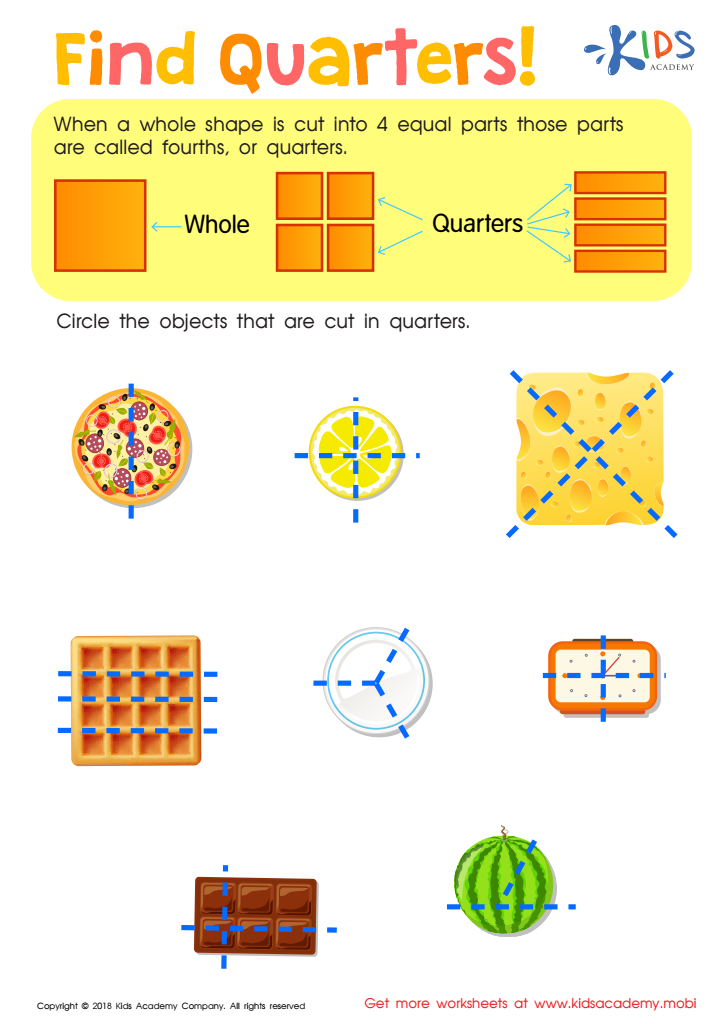Counting practice Normal Geometry Worksheets
3 filtered results
-
From - To
Enhance your child's mathematical skills with our Counting Practice Normal Geometry Worksheets! Designed for early learners, these engaging worksheets introduce essential counting concepts while integrating geometric shapes. Children will have fun identifying and counting shapes like squares, circles, and triangles, all while developing critical thinking and problem-solving skills. Our worksheets encourage hands-on learning and provide a fun way to practice math at home or in the classroom. Tailored to various learning levels, these resources help build a strong foundation in math. Download our Counting Practice Normal Geometry Worksheets today and make learning an enjoyable journey for your little ones!


Let's Count Faces! Worksheet


Using Triangles to Make Squares and Rhombuses Worksheet


Find Quarters Worksheet
Counting practice and understanding normal geometry are foundational skills that greatly benefit young learners in their educational journey. Parents and teachers should care about these practices for several reasons.
Firstly, counting establishes a critical mathematical baseline. Mastery of counting not only aids in the understanding of numbers but also serves as a springboard for more advanced math concepts such as addition, subtraction, and basic operations. Children who are proficient at counting demonstrate improved problem-solving skills and greater confidence in handling numerical tasks.
Secondly, grasping normal geometry introduces children to the properties, shapes, and spatial relationships of objects in their environment. Early exposure to concepts such as shapes, symmetry, and dimensions fosters critical thinking and creativity. Through hands-on activities involving blocks or drawing shapes, children can enhance their spatial awareness, which is essential for subjects like science, engineering, and geography.
Moreover, counting and geometry provide opportunities for parents and teachers to engage in interactive and playful learning experiences. These activities can strengthen parent-child bonds and create meaningful learning moments that extend beyond the classroom. Overall, fostering skills in counting and normal geometry sets a strong foundation for academic success and lifelong learning.
 Assign to My Students
Assign to My Students






























